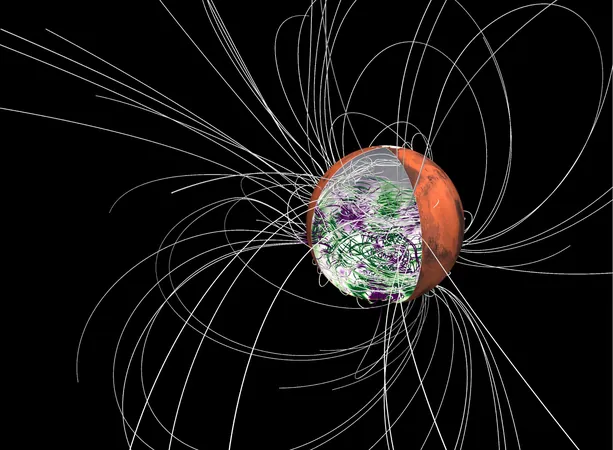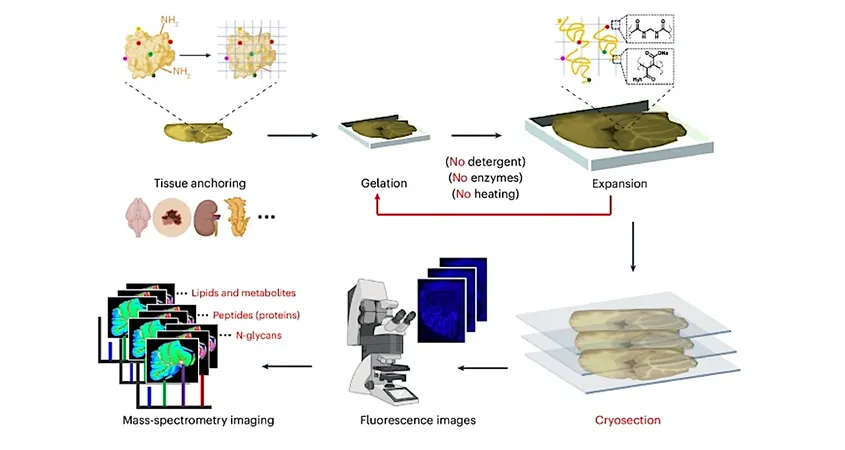
Unlocking Mars' Magnetic Mysteries: How a Molten Core Shapes the Red Planet's Unique Field
2025-04-15
Author: William
Mars' Magnetic Enigma Revealed!
Mars, our intriguing neighbor, once boasted a magnetic field strong enough to protect its atmosphere from the solar wind, much like Earth does today. However, what remains is merely a ghostly imprint, puzzling scientists about its uneven presence, particularly its dominance in the southern hemisphere.
A Game-Changing Study Unveils New Insights
A groundbreaking study from the University of Texas Institute for Geophysics (UTIG) suggests that the magnetic realm of Mars may have been distinctly lopsided. Researchers propose that Mars' magnetic field was primarily confined to the southern hemisphere, a revelation that could explain its current magnetic signatures.
Liquid Core Theory: A New Perspective
Chi Yan, the lead author of the study, indicated that this peculiar magnetic field configuration might be linked to the nature of Mars’ inner core. He argues, "Without a solid inner core, it becomes significantly simpler to generate one-sided magnetic fields, which may alter our understanding of Mars' ancient dynamo and its ability to retain an atmosphere over time."
Simulations Unravel the Mystery
Published in the journal Geophysical Research Letters, the study utilized advanced computer simulations. Previously, models suggested a solid inner core for Mars similar to Earth, but new findings from NASA’s InSight lander hinted that Mars’ core consists of lighter elements with a potentially lower melting point.
Implications of a Molten Core
If Mars' core is molten now, it likely was molten 4 billion years ago when its magnetic field was active, according to co-author Sabine Stanley from Johns Hopkins University. Through meticulous simulations, researchers configured the mantle's temperature to be hotter in the northern hemisphere. This setup created a scenario where heat escaped solely from the southern core, igniting a dynamo effect and forming a robust hemispheric magnetic field.
Understanding Mars: More Than Meets the Eye
Doug Hemingway, a planetary researcher at UTIG, emphasizes that these findings offer a fresh perspective, challenging the long-held belief that asteroid impacts erased evidence of a once-thriving magnetic field in the northern rocks. He notes, "Mars presents a unique blend of Earth-like qualities and dramatic differences, making it a fascinating subject for exploration. Any insight into its asymmetrical features is invaluable."
The Quest Continues!
As researchers delve deeper into Mars’ enigmatic past, the equation continues to evolve, offering tantalizing clues about the planet's history and potentially its future as a destination for human exploration.









 Brasil (PT)
Brasil (PT)
 Canada (EN)
Canada (EN)
 Chile (ES)
Chile (ES)
 Česko (CS)
Česko (CS)
 대한민국 (KO)
대한민국 (KO)
 España (ES)
España (ES)
 France (FR)
France (FR)
 Hong Kong (EN)
Hong Kong (EN)
 Italia (IT)
Italia (IT)
 日本 (JA)
日本 (JA)
 Magyarország (HU)
Magyarország (HU)
 Norge (NO)
Norge (NO)
 Polska (PL)
Polska (PL)
 Schweiz (DE)
Schweiz (DE)
 Singapore (EN)
Singapore (EN)
 Sverige (SV)
Sverige (SV)
 Suomi (FI)
Suomi (FI)
 Türkiye (TR)
Türkiye (TR)
 الإمارات العربية المتحدة (AR)
الإمارات العربية المتحدة (AR)